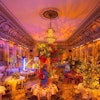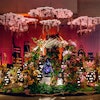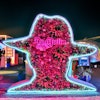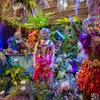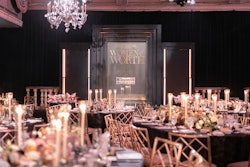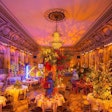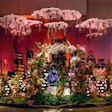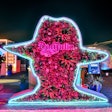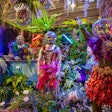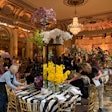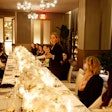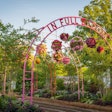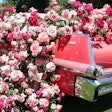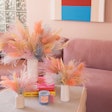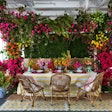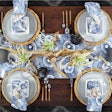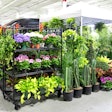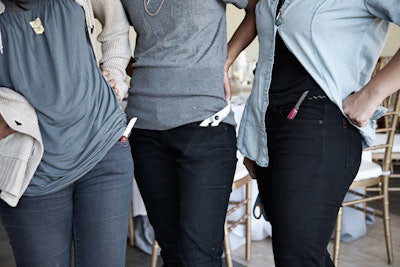
When it comes to getting dressed on event day, experienced industry professionals have go-to garb made for utility and comfort. They share their considerations for outfits and accessories meant for ease of movement, looking professional, carrying essentials, and spending long and active hours on their feet.
Do wear dark colors.
Many planners say they wear monochromatic dark outfits, in shades like gray or navy, and many others cite all-black ensembles as their essential event-day wear.
“Black is the key color because [it allows you to blend in],” says André Wells of Events by André Wells in Washington. “Black is also one of those easy colors where the whole team can look more uniform. It covers different shapes and sizes [in a becoming fashion] and keeps things simple.”
Jes Gordon of New York-based Jes Gordon/Proper Fun adds that black is useful in signaling to guests which people in the room are members of the staff and available for questions. “Dark colors are commonly associated with staff,” she says. “You want to be easily identifiable to the guests.”
Don’t bring a change of clothes.
It seems logical to arrive on the day of an event wearing one set of clothes and come packed with more options—like something to wear during hands-on work, or a change for after an event gets rolling. But pros say that extra step can be a nuisance, a time suck, and a recipe for forgetting something important. “Arriving dressed ensures that you are ready at a moment’s notice,” Gordon says.
David Stark of New York-based David Stark Design and Production adds: “I’ve learned over the years that the quick change in the back room from work clothes into a suit is not something that I love. I prefer to show up already dressed in my suit, but I’ll wear a certain pair of sneakers for the event install and bring a second pair of shoes to change into before the event begins.”
Do wear comfortable shoes.
Event producers emphasize the importance of flat, comfortable shoes for working extended hours on their feet, often doing work that requires considerable physical activity.
“A lot of our job involves climbing in and out of delivery vans, schlepping boxes from point A to point B, and scaling ladders to hang decor, [so] it's important for our team to wear comfortable clothes and shoes that allow for easy movement,” says Erica Taylor Haskins, partner and C.M.O. of Tinsel & Twine in New York.
Says Caryl Lyons of San Francisco Bay Area-based Roar Events, “For shoes, my go-to are Tieks [ballet flats]. They look professional and they have every color under the sun so they are great to wear during the day as well if you need to get fancier at night. I’ve tried wearing heels, but when you are running around and on so many surfaces, your feet get beat up.”
Wells notes that it’s not just women who benefit from a carefully considered shoe selection either. “A fallacy is that men's shoes don’t hurt—men’s dress shoes hurt too,” he says. “So if I see a black sneaker with a black sole, I buy it. If it’s a black shoe with black laces, no one ever knows. I try to get something cool and hip [and comfortable] for break down and set up.”
Don’t forget to layer.
A venue may cycle through various temperatures through the course of load in and load out—sometimes unpredictably so—or an event professional may spend time going between indoor and outdoor spaces with variable conditions. That’s why many emphasize the importance of layering clothing.
“It’s about the layering so you don’t have to worry about [temperature changes],” Wells says. “In inclement weather, we wear black top coats or all-weather coats [so we remain looking] important and authoritative.”
Don’t carry extras.
Extraneous handheld items are only liabilities, pros argue. “Don’t overpack,” Gordon says. “Bring only the necessities, as many venues are short on storage.”
Wells adds, “[Even] if it’s raining, I don’t worry about getting wet. I am not going to be able to hold onto or remember an umbrella. You’re not with your things a lot [for instance if you leave items in a production office], and things go missing. So we try to minimize what we carry to the event.”
Don’t use bags with shoulder straps.
People who carry their purses with them need a style of bag that is simultaneously convenient and out of the way—that means never opting for a hand-carried bag, and rarely for a shoulder strap. “Ninety percent of the time, I’m carrying my cross-body purse with me because it literally holds everything I need: my iPad mini, iPhone, lip balm, Advil, money,” Lyons says. “And if I’m not carrying my purse, the outfit I’m wearing has to be able to hold my phone.”
Do wear clothes that have pockets.
Event pros nearly unanimously say that pockets provide essential storage for small items that must be kept handy and safe. “Pockets are a must to hold our tools: floral knives, shears, wire clippers, gaffer’s tape, cell phones, headsets,” Gordon says.
And industry pros should know which specific tools they need to keep on their person in order to effectively do their jobs—and keep people happy. “I keep the event timeline in my suit jacket pocket,” Wells says. “And I always keep Altoids in my pocket because I’m talking to people all the time. I empty them into my pocket because the tin makes too much noise.”
